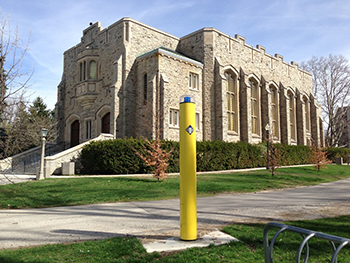Shining a Light on Campus Security
 From the more-recent reports of violence at Penn State University and the University of Virginia to the not-so-distant horrors of Virginia Tech, educational institutions continue to learn just how important it is to have comprehensive security and safety policies.
From the more-recent reports of violence at Penn State University and the University of Virginia to the not-so-distant horrors of Virginia Tech, educational institutions continue to learn just how important it is to have comprehensive security and safety policies.
A passive approach to campus safety and security simply doesn’t cut it anymore, not if a college or university wants to meet Title IX and Clery Act standards. Not when an estimated one in four women experience sexual assault at some point while in school or university. And not when the fear of an active shooter remains alive.
As a result, more and more institutions are taking the necessary steps to ensure everyone enjoys the peace of mind of a safe environment. Among those initiatives is increasing the visibility of security systems, particularly when it comes to outdoor lighting and emergency communications.
For example, a youth council in Charlottesville, Va., that regularly weighs in on issues that affect the community started circulating a petition in early December requesting the city installs emergency blue light phones in the downtown shopping district.
“I think they have an understanding that the value of the [phones] might be more symbolic than practical, but the research they’ve done has shown that when there are blue light phones crime is less likely to happen,” the Charlottesville Tomorrow reported one student as saying.
A growing number of institutions are being proactive in raising the profile of the safety protocols available at their locations.
The University of Massachusetts recently held a Walk for Light event, which highlighted issues such as lighting problems and overgrown bushes and trees, while the University of Ontario Institute for Technology launched a Yes Means Yes sexual harassment campaign focused on empowering individuals and included a renewed emphasis on the assistance blue light phones can provide. The University of Tennessee emphasized the use of help points after a student was groped while jogging on campus, and Fort Hays State University in Kansas has held annual safety walks that highlight areas on campus that aren’t well lit and may need emergency kiosks.
Central Michigan University even held a Blue Light Fun Run in 2013 that led participants to emergency phone locations around campus to build awareness.
Blue light phones, particularly tower or pedestal models, have seen resurgence in popularity over the past several years for a number of reasons:
• High visibility: LED strobes and area lights make visual identification easy while also serving as a deterrent for crime — a key feature that isn’t always accomplished with surveillance cameras, which often blend into the surrounding environment or are ignored.
• Two-way communication: Cell phones have gotten more sophisticated, but they are by no means a perfect technology. Blue light phones won’t jam, drop calls or have dead batteries, ensuring a reliable link to first responders when help is needed.
• Security hub: Enclosures frequently have the ability to house more than just emergency phones, with items such as public address speakers, surveillance cameras, card readers and automated external defibrillators creating advanced end points dedicated to security.
• More than emergencies: Many people think the only time to use blue light phones is when they need to report a suspicious individual, fire or health emergencies. But they can also come in handy when it comes to situations such as car trouble, malfunctioning parking gates or requesting a late-night escort.
A student at the University of California, Berkeley discovered just how useful that versatility and visibility can be in mid-October. After two men robbed him, the student quickly used one of the many blue light phones located throughout the school’s 1,200-acre campus to contact police, who then were able to quickly apprehend the two suspects and return the stolen items.
During a 2014 webinar covering the topic of school security, Bill Elvey, associate vice chancellor for facilities planning and management at the University of Wisconsin-Madison, said blue light phones still play a meaningful role for college campuses.
“I think they are necessary in some capacity if for no other reason than public perception,” Elvey said. “When parents and visitors come to our campus, they expect to see those things and they recognize that when they are out there that connotes a safe, secure campus.”
Regardless of the technology, establishing a visible security system is only one easy-but-necessary step for colleges and universities looking to create a safe environment. But the work doesn’t end with installation. Without continually updating and informing an ever-changing student population, institutions will continue to fight an uphill battle when it comes to campus safety.
Michael Zuidema is the communications manager for Code Blue Corporation, based in Holland, Mich.
